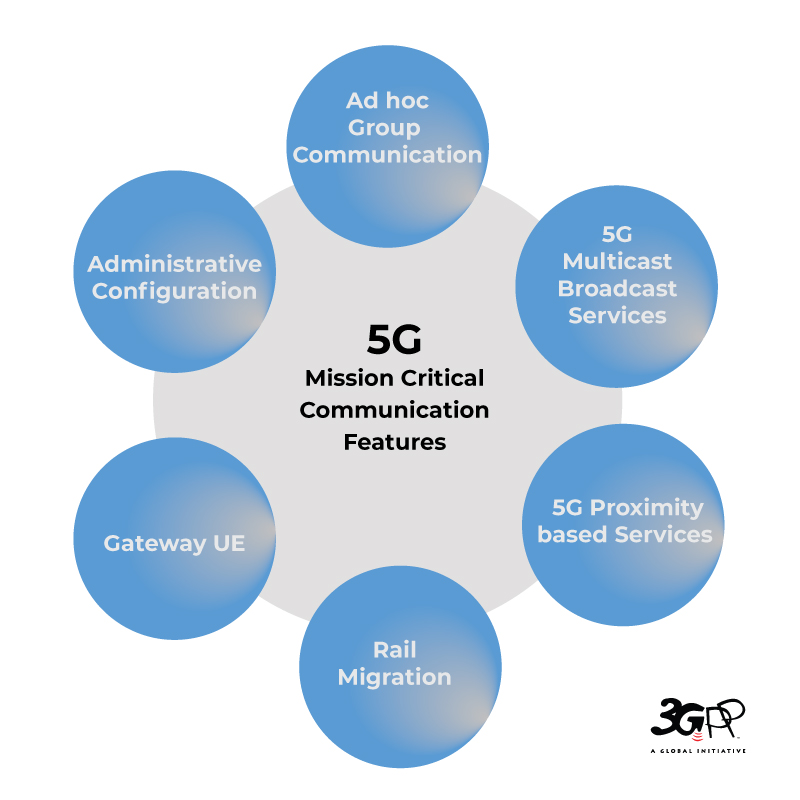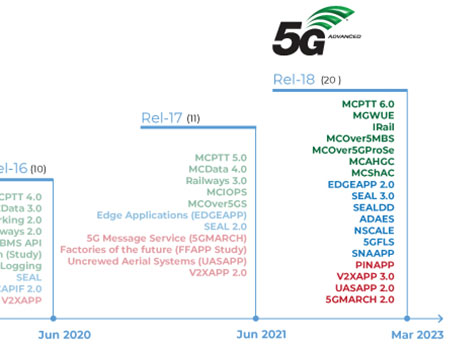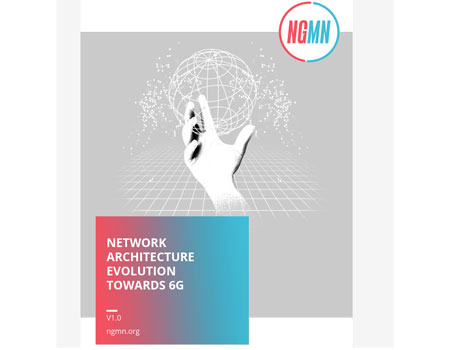By Basu Pattan (SA6 Vice-chair), Alan Soloway (SA6 Chair) and Jukka Vialen (SA6 Vice-chair)
First published Nov. 2023, in Highlights Issue 07
3GPP TSG SA WG6 (SA6) has, since its inception, championed application layer architecture specifications for mission critical systems (public safety, railways) as well as application enabler layer specifications for supporting the integration of 3GPP systems with other verticals such as - V2X, UAS, IoT. Furthermore, SA6 has developed and specified service frameworks, such as the Common API Framework (CAPIF), the Service Enabler Architecture Layer (SEAL) and Edge Application enablement (EDGEAPP).
In this context, SA6 defined functionality serves as an application middleware, with capabilities that can be used to develop “Platform as a Service (PaaS)”, to enable interactions between the application providers and the 3GPP network layer, across both user equipment (UE) and the core network. The Standards Timeline diagram below shows the evolution of SA6 specifications from Release 13 to Release 18, under three broad categories:
- Mission Critical Services
- 5G Service Frameworks
- Vertical Application Enablers
Recently, SA6 completed Release 18 specifications development. What follows is a brief overview of some of the main features that have resulted from that work.
Mission Critical Services
Mission Critical (MC) standards development within 3GPP started in 2015 in Release 13, following a major initiative from the public safety industry to create global standards with the collaboration of various government organisations, vendors and users from around the world.
In Release 18, some of the key new features developed include:
- MC gateway UE, that enables MC service access for a MC service user residing on non-3GPP capable devices and for devices which cannot host MC service clients
- Ad hoc group communication, that allows an MC user to select other users and setup group communication on the fly across one or more MC systems
- MC services using 5G MBS supports both Multicast and Broadcast modes to provide efficient downlink delivery of user traffic in group communication
- 5G ProSe UE-to-network relay leverages newly designed radio and core network for providing MC service UE, connectivity and relaying of MC traffic to remote MC service UE(s), using 5G ProSe Layer-2 and Layer-3 UE-to-network relaying techniques
- Enhancements to the Railways functionality (applicable also for Mission Critical verticals) e.g. location management across MC systems, migration during ongoing communications.
SA6 also completed a study (TR 23.700-38) for sharing of the administrative configuration between interconnected MC Service systems of MCPTT, for which the normative specification is expected in Release 19.

Functional architecture and information flows to support MCPTT; Stage 2 | Common functional architecture to support MC services; Stage 2 | Functional architecture and information flows to support MCVideo; Stage 2 | Functional architecture and information flows to support MCData; Stage 2 | Mission Critical Communication Interworking with Land Mobile Radio Systems | Mission Critical services over 5G System; Stage 2 |
5G Service Frameworks
5G service frameworks, simplify and enhance the capabilities of the underlying 5G system, allowing 3rd party applications to rapidly develop and deploy new vertical services over 3GPP networks.
Prior to Release 18, EDGEAPP specified capabilities such as Service Provisioning, EEC registration, EAS registration, EAS discovery, capabilities exposure, support for service continuity. Release 18 mainly focused on enhancements to support emerging industry requirements such as roaming and federation, Edge node sharing, discovery of common EAS, dynamic EAS instantiation, ACR between EAS and Cloud, Bundle EASs, EDGE-5 APIs, Exposure of EAS Service APIs using CAPIF.
SEAL specified a set of common capabilities like Group Management, Configuration Management, Key Management, Identity Management, Location Management and Network Resource Management utilized by V2X and UAS applications and potential usage by many other verticals. Release 18 introduced new capabilities and enhancements including:
- Notification Management, that enables VAL clients to get notification service from the VAL servers, offloading the complexity of delivery and reception of notifications to the enabler layer
- Data Delivery, that eases the application content delivery for vertical applications and also provides storage capabilities
- Application Data Analytics Enablement (ADAE), that offers value-add application data analytics capabilities which cover statistics/predictions for the end-to-end application service
- Network Slice Capability Enablement (NSCE) is enhanced to support network slice lifecycle management, optimizations, performance and analytics monitoring, diagnostics, adaptation, prediction etc.
- Location Management service is enhanced to support fused location function and the VAL service area
Subscriber-aware northbound API access (SNAAPP) made enhancements to CAPIF in Release 18 to support Resource owner-aware Northbound API Access (RNAA), which enables the authorization of API invokers when the APIs are invoked in the context of resource owners (e.g., MNO subscribers).
Further reading:
Architecture for enabling Edge Applications | Service Enabler Architecture Layer for Verticals (SEAL); Functional architecture and information flows | Procedures for Network Slice Capability Exposure for Application Layer Enablement Service | Service Enabler Architecture Layer for Verticals (SEAL); Data Delivery enabler for vertical applications | Functional architecture and information flows for Application Data Analytics Enablement Service | Common API Framework for 3GPP Northbound APIs |
Vertical Application Enablers
While 5G service frameworks offer horizontal capabilities, SA6 has also introduced vertical application-enabling initiatives that cater to vertical-specific application developers. These initiatives can leverage the capabilities offered by 5G service frameworks by ‘layering on top’ and employ their services. In addition, 5G Vertical Application Enablers offer specific customized features meeting the requirements of individual verticals.
Application layer support for Personal IoT Network (PIN) introduced in Release 18 enables PIN applications over 3GPP networks supporting capabilities registration, service discovery of PIN elements, PIN profile and management, communication between PIN elements, service switch and continuity, relay selection for direct communication etc.
Figure: Application Enablement in 5G System Deployment
V2XAPP, UASAPP and 5GMARCH specifications were enhanced in Release 18. V2XAPP enhanced with features such as Vulnerable Road User (VRU) zone configuration and operation, V2P communications. UASAPP enhanced the support for multi-USS deployments, detect and avoid services and applications, tracking dynamic UAVs in an application defined area relative to a host UAV. 5GMARCH enhancements included Application Server Registration, UE bulk registration, Broadcast message delivery, Messaging Topic handling between multiple partner servers.
Further Reading:
Application layer support for Vehicle-to-Everything (V2X) services; Functional architecture and information flows | Application layer support for Uncrewed Aerial System (UAS); Functional architecture and information flows | Application layer support for Personal IoT Network | Application architecture for MSGin5G Service; Stage 2 |
Next steps
Currently, SA6 is finalizing the scope for Release 19 and expected to conclude by Dec 2023. While the plan is to continue developing enhancements to some of the existing specifications from Release 18 including Mission Critical Services, EDGEAPP, Location services, 5GMARCH, UASAPP, and SEAL Data Delivery, we are witnessing high interest in new topics such as application layer support for AI/ML services, eMMTel, Metaverse, and Satellite connectivity, that can offer a comprehensive set of application enablement features for 5G-Advanced. We encourage you to join us in this exciting journey of application enablement over 3GPP networks.




 Technology
Technology




